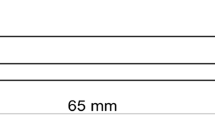Abstract
Forecasting the yield is critical for making aircraft parts using three-dimensional (3D) printing. However, the existing methods for the yield forecasting exhibit a common problem: they employ the logarithmic or log-sigmoid value, rather than the original value, of the yield to simplify the computation. To address this problem, an advanced fuzzy approach was proposed in this study. The focus of this study is to investigate the effectiveness of the advanced fuzzy approach for forecasting the yield of a 3D-printed aircraft part. The advanced fuzzy approach derived the direct-solution (DS) versions of the existing fuzzy yield learning models. These DS versions use the original yield value directly, thereby optimizing the forecasting performance. The proposed methodology was applied to the process of making an aircraft part using 3D printing to evaluate its effectiveness. Experimental results revealed significant improvements in the forecasting accuracy of the proposed methodology compared with the aforementioned methods. Furthermore, when the proposed methodology was applied to various fuzzy yield learning models, different improvements were obtained.
Similar content being viewed by others
References
Bazaraa MS, Sherali HD, Shetty CM (1993) Nonlinear programming: theory and algorithms. Wiley, New York
Chen T (2013) Forecasting the yield of a semiconductor product with a collaborative intelligence approach. Appl Soft Comput 13:1552–1560
Chen T (2017) A heterogeneous fuzzy collaborative intelligence approach for forecasting product yield. Appl Soft Comput 57:210–224
Chen T, Lin Y-C (2008) A fuzzy-neural system incorporating unequally important expert opinions for semiconductor yield forecasting. Int J Uncertainty Fuzziness Knowledge Based Syst 16(1):35–58
Chen T, Lin Y-C (2017) Feasibility evaluation and optimization of a smart manufacturing system based on 3D printing. Int J Intell Syst 32:394–413
Chen T, Wang Y-C (2014) An agent-based fuzzy collaborative intelligence approach for precise and accurate semiconductor yield forecasting. IEEE Trans Fuzzy Syst 22(1):201–211
Chua CK, Wong CH, Yeong WY (2017) Standards, quality control, and measurement sciences in 3D printing and additive manufacturing. Academic Press, London, UK
Donoso S, Marin N, Vila MA (2006) Quadratic programming models for fuzzy regression. Proceedings of International Conference on Mathematical and Statistical Modeling in Honor of Enrique Castillo
Dua V (2015) Mixed integer polynomial programming. Comput Chem Eng 72:387–394
Eberle L, Sugiyama H, Papadokonstantakis S, Graser A, Schmidt R, Hungerbühler K (2016) Data-driven tiered procedure for enhancing yield in drug product manufacturing. Comput Chem Eng 87:82–94
Gruber H (1994) Learning and strategic product innovation: theory and evidence for the semiconductor industry. Elsevier Science B. V, The Netherlands
Guo L, Qiu J (2018) Combination of cloud manufacturing and 3D printing: research progress and prospect. Int J Adv Manuf Technol 96(5–8):1929–1942
Huang R, Riddle M, Graziano D, Warren J, Das S, Nimbalkar S, Cresko J, Masanet E (2016) Energy and emissions saving potential of additive manufacturing: the case of lightweight aircraft components. J Clean Prod 135:1559–1570
John YM, Patel R, Mujtaba IM (2017) Modeling and simulation of an industrial riser in fluid catalytic cracking process. Comput Chem Eng 106:730–743
Joshi SC, Sheikh AA (2015) 3D printing in aerospace and its long-term sustainability. Virtual Phys Prototyping 10(4):175–185
Li N, Li Y, Liu S (2016) Rapid prototyping of continuous carbon fiber reinforced polylactic acid composites by 3D printing. J Mater Process Technol 238:218–225
Martin JH, Yahata BD, Hundley JM, Mayer JA, Schaedler TA, Pollock TM (2017) 3D printing of high-strength aluminium alloys. Nature 549(7672):365–369
Moon SK, Tan YE, Hwang J, Yoon YJ (2014) Application of 3D printing technology for designing light-weight unmanned aerial vehicle wing structures. Int J Precis Eng Manuf Green Technol 1(3):223–228
Murr LE (2016) Frontiers of 3D printing/additive manufacturing: from human organs to aircraft fabrication. J Mater Sci Technol 32(10):987–995
Nakagawa Y, Mori KI, Maeno T (2017) 3D printing of carbon fibre-reinforced plastic parts. Int J Adv Manuf Technol 91(5–8):2811–2817
Parra AAM, Asmanoglo C, Agar DW (2018) Modeling and optimization of a moving-bed adsorptive reactor for the reverse water-gas shift reaction. Comput Chem Eng 109:203–215
Peters G (1994) Fuzzy linear regression with fuzzy intervals. Fuzzy Sets Syst 63:45–55, 1994
Tanaka H, Watada J (1988) Possibilistic linear systems and their application to the linear regression model. Fuzzy Sets Syst 272:275–289
Tavanai H, Taheri SM, Nasiri M (2005) Modeling of color yield in polyethylene terephthalate dyeing with statistical and fuzzy regression. Iran Polym J 14(11):954
Thomas DJ (2018) Developing nanocomposite 3D printing filaments for enhanced integrated device fabrication. Int J Adv Manuf Technol 95(9–12):4191–4198
Wu HC, Chen TCT (2018) Quality control issues in 3D-printing manufacturing: a review. Rapid Prototyp J 24(3):607–614
Yang Y, Tjia R (2010) Process modeling and optimization of batch fractional distillation to increase throughput and yield in manufacture of active pharmaceutical ingredient (API). Comput Chem Eng 34(7):1030–1035
Yang Y, Chen Y, Wei Y, Li Y (2016) 3D printing of shape memory polymer for functional part fabrication. Int J Adv Manuf Technol 84(9–12):2079–2095
Zimmermann HJ (1991) Fuzzy set theory and its applications. Springer, New York
Author information
Authors and Affiliations
Corresponding author
Rights and permissions
About this article
Cite this article
Chen, T., Wang, YC. An advanced fuzzy approach for modeling the yield improvement of making aircraft parts using 3D printing. Int J Adv Manuf Technol 105, 4085–4095 (2019). https://doi.org/10.1007/s00170-019-03295-z
Received:
Accepted:
Published:
Issue Date:
DOI: https://doi.org/10.1007/s00170-019-03295-z




